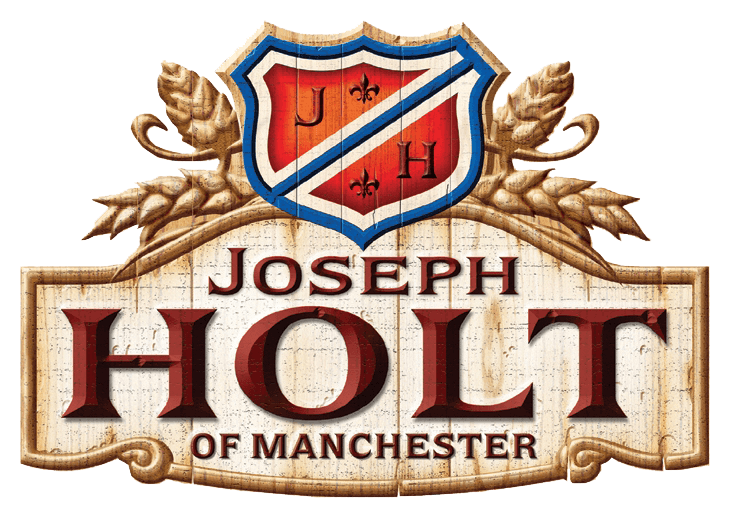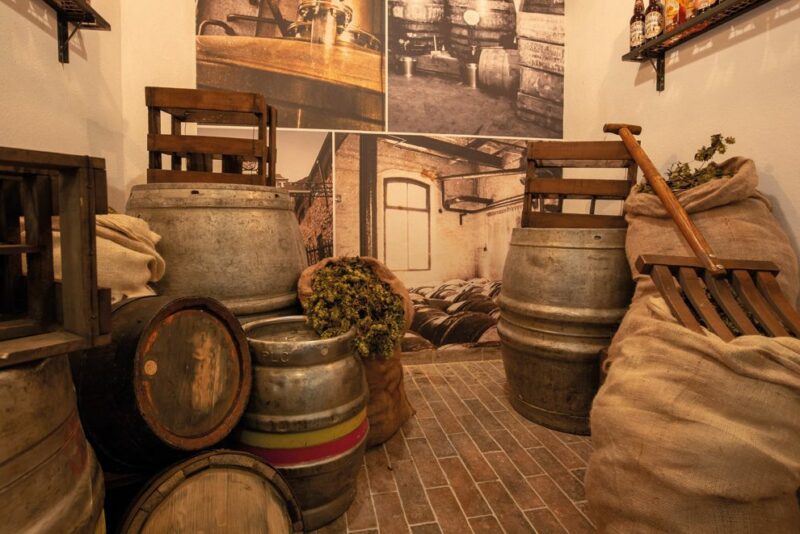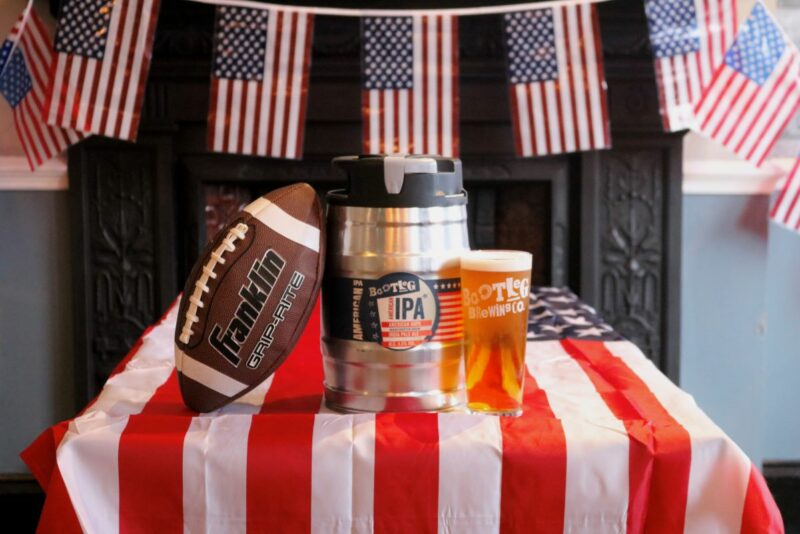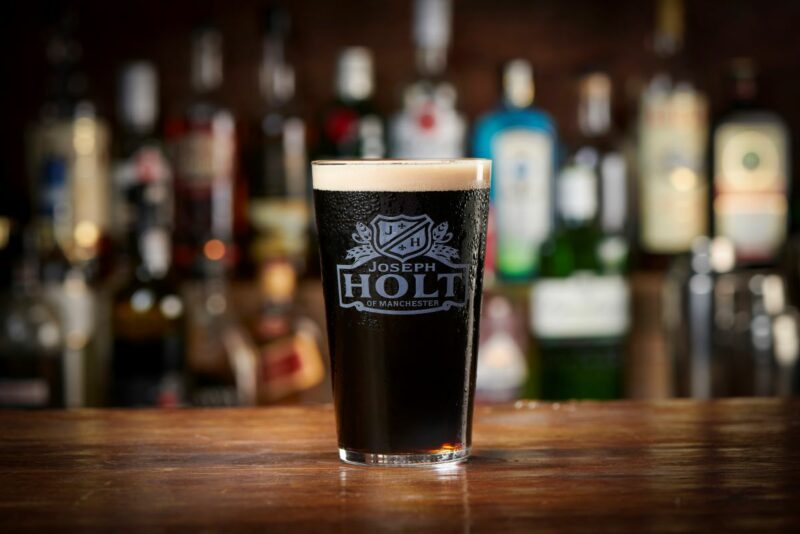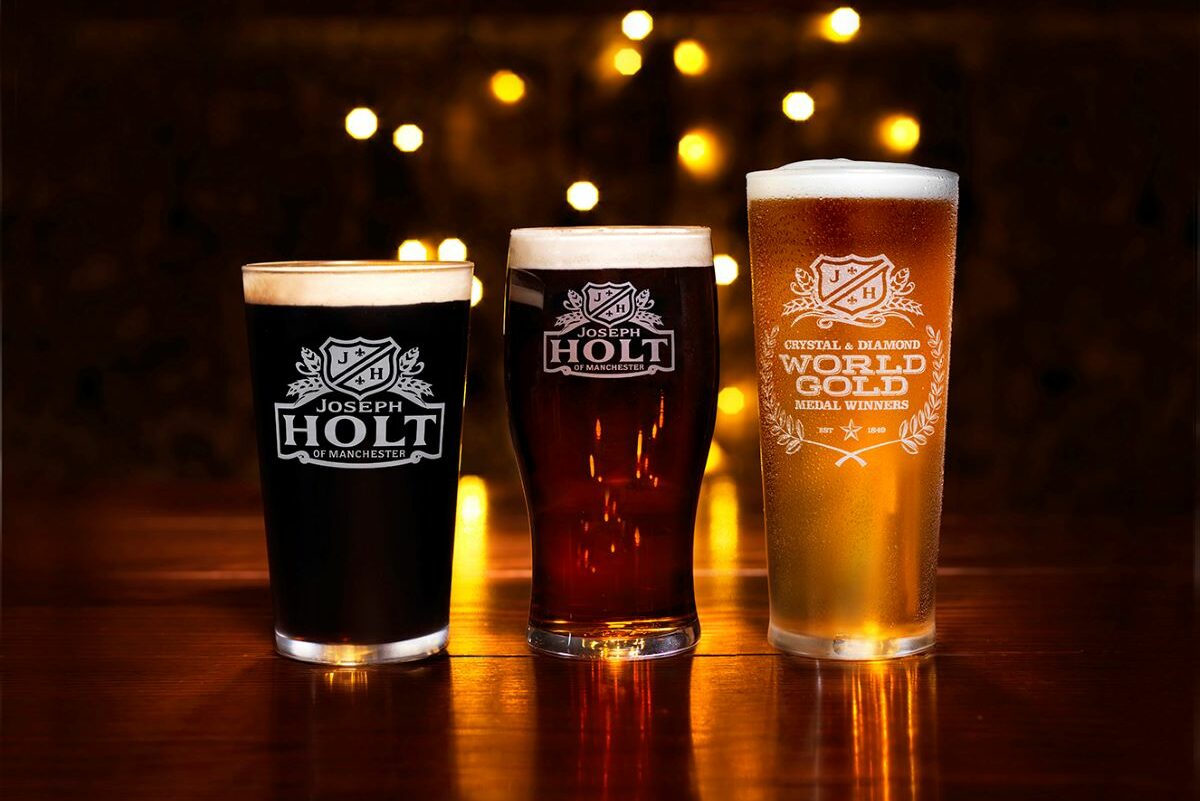
Complete Guide to the Main Types of Beer Styles
There are over a hundred different types of beer. Over seventy different ales, and twenty-plus different lager styles. Then there are now a few hybrid styles to keep beer drinkers of all kinds on their toes.
Even seasoned beer aficionados can’t always agree on which beer fits in what category.
This isn’t surprising as it’s not always straightforward – there are numerous classifications, categories and sub-categories. At the International Brewing Awards, the industry’s leading awards ceremony, there are nine broad beer categories and 33 sub-classes, to which the best beers are given a medal. At Joseph Holt, we’re one of a few breweries in the world to win five gold medals!
Tasting, testing and discovering the nuances of different beers is as fascinating – and taken as seriously – as wine tasting.
Different types of beer styles
Types of beer vary in colour, flavour and aroma. Different varieties of beer are known as beer styles.
Learning about beer styles could open your eyes – and your taste buds – to a literal world of beer. Very broadly speaking there are two main types of beer:
- Lager
- Ale
Interestingly, both are brewed from the same main beer ingredients, but both of these types can be sub-divided many times over – particularly the ale category.
Does it sound a bit of a minefield? Even more so when you add cask vs keg into the mix.
However, things don’t have to be too complicated. It’s actually a great opportunity to get together at a local pub to discover and appreciate beer – historically, Britain’s favourite drink, but that’s a whole other article.
Our helpful beer guide will get your rather enjoyable voyage of discovery off the ground, and your local’s knowledgeable staff will be happy to help. If you like a bit of grub with your beer, check out our best beer and food pairings guide too.
So, let’s take a look at the most popular types of beer on the market today.
Main types of beer
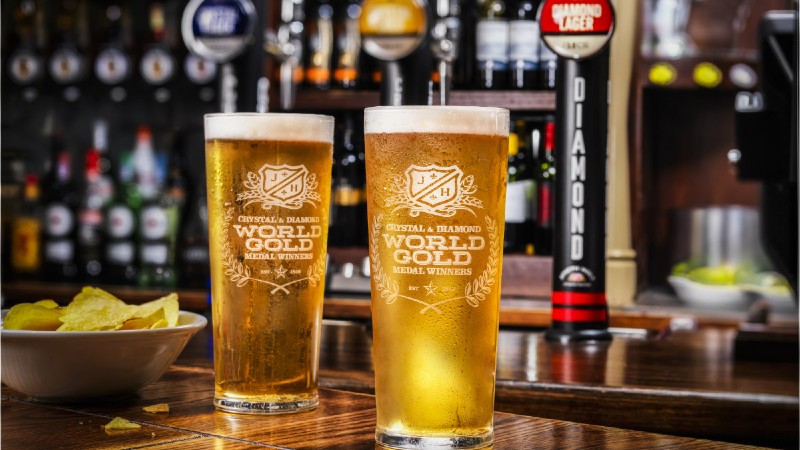
Pictured above: Diamond Premium Lager, also comes in bottles and 5l mini kegs.
Lager
Lager beer derives from ‘largen’, the German word for storage, which hints at the brewing method.
Lagers ferment more slowly and at colder temperatures than ales. Although there is such thing as top and bottom fermenting yeast, fermentation for both styles takes place throughout the body of the beer. We store both lagers and ales at very cold temperatures (just above freezing) in the brewery, but lagers are stored for longer.
Those are technicalities of course, but for the drinker it’s all about the taste. Lager tends to be a light, refreshing and balanced drink – neither too bitter nor too sweet. Most are pale in colour, with a white head and are carbonated. The vast majority are also vegan friendly beers.
Holt’s lagers include Diamond Premium lager, Crystal Gold and Crystal lager.
Other types of lager, with thanks to our friends at CAMRA, include:
- Pilsner: In Czech or German styles, pilsners can vary from light in malt to a more malty scent and taste. They tend to range from medium to high bitterness.
- Vienna Lagers: Usually crisp and clean, with a malty character and some bitterness for balance.
- Marzen: Slightly deeper in colour, lightly hopped with a balance of sweetness and bitterness.
- Dark Lagers: Often with flavours like chocolate and coffee, and some sweet maltiness. As the name suggests, they are dark in colour. Alts, Dunkels, Schwarzbier and Bocks are also dark lagers.
- Kölsch: Not strictly a lager, but often classified as such. Top fermented or a mix of cold and warm fermentation.
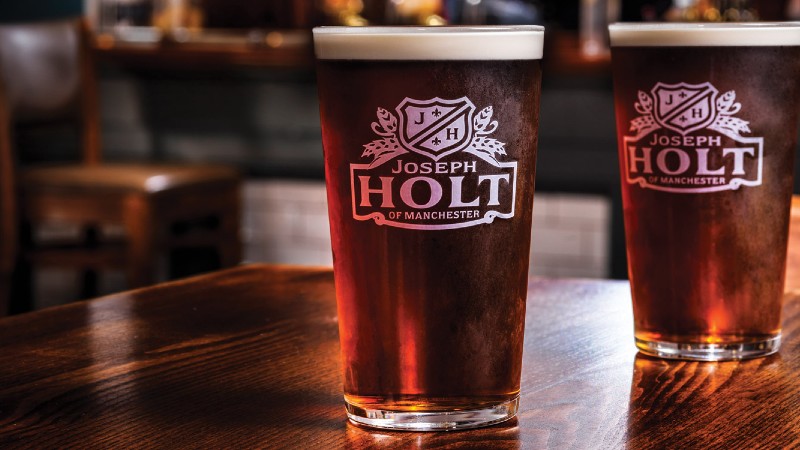
Pictured above: Joseph Holt Smooth, a kegged ale
Ale
Ales are brewed where the yeast generally acts from the top down although fermentation will take place throughout the whole body of the beer. This, with the addition of hops, gives them the distinctive, full-bodied flavour which tends to be more bitter than lagers.
There are many, many different kinds of ale, most of which can then be further sub-classified. At the pub, ale is served in two main ways:
- Cask ale
- Kegged ale
If you’re interested, you can have a read of our detailed cask ale guide here. Let’s have a go at splitting out the different types of ale.
Bitter
Bitters are split into session bitters and premium bitters. ‘Session’ Bitters tend to have an ABV of less than 4.4% and are generally in the amber to dark brown range of the colour spectrum. Characterised by a malty taste and scent with noticeable hops, richly flavoured and sometimes with a very subtle earthy, fruity or floral notes. Despite the name, the bitterness can be quite subtle or strong.
Premium Bitters, sometimes called Best Bitters, are 4.4% – 6.4% ABV. They have a medium to high malt flavour with distinct hops. CAMRA says a premium bitter can be ‘earthy, spicy and peppery but may also be floral, piney or citrus. Fruit should not dominate’.
Holt’s Bitter is an iconic pint – a Manchester original with malty notes, punchy hops and a silky-smooth finish. Alternatively, try the medal-winning 1849 Champion ale, a dark, tempting best bitter delivering an earthy, malty aroma with slightly nutty, toasted taste.
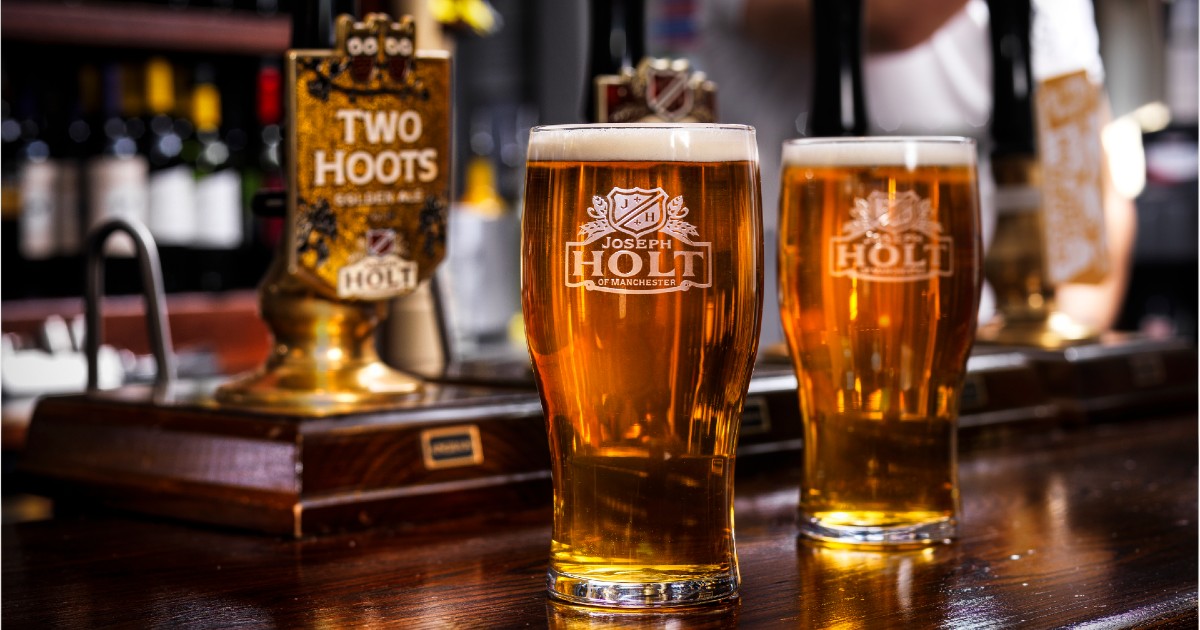
Pictured above: Two Hoots golden cask ale. Also comes in bottles
Pale, Blonde and Golden Ale Types
This diverse sub-category features such delights as British and New World pale ales, blonde, golden ales, IPAs, American pale ales and more.
These beer types tend to have minimal malt character and can be more fruity and floral. Hop content can range from traditional English and German hops through to more citrusy New World hops.
Golden ales, such as Two Hoots, can have a marked fruity, often citrusy notes, and can be on the bitter side due to the hop content. With blonde ales, like our Chorlton Pale Ale, you will also get fruity and zesty notes. This certainly isn’t true for all blonde beer though.
It can be hard to define the exact taste biography of a golden, pale or blonde ale. There are many different variations out there with unique flavour profiles – that’s part of the magic of beer! Although rudimentary, the main way you can tell the styles apart is through their colour.
IPA
IPA is short for India Pale Ale and has seen a recent surge in popularity over the last decade. Rumour has it that India Pale Ale got its name in colonial times, as India’s climate didn’t work for brewing beer.
Allegedly, British sailors created a hop-heavy beer, with the hops as a preservative so it could cope with the long journey. Other experts believe British brewers created the IPA style.
The style was reinvented and popularised recently. You can read more about pale ales here.
Somewhat confusingly, there are British and New World IPAs, as well as Black IPAs. We also now have double and triple IPAs, which are very heavily hopped and stronger, as well as session IPAs.
At Holt’s, we have our own IPA, which is no-nonsense and distinctive. And in cask too. We also have Northern Hop citrus pale ale and our big-hitting American IPA.
Mild
Milds are lower in strength, usually less than 4% ABV, and delicately hopped. They are usually malty, often sweet with a touch of bitterness and dark in appearance (though light milds also exist).
Mild originally meant a young ale, as opposed to an aged ale. Since the 1960s, they have been declining in popularity, but are currently experiencing a rise in prominence, thanks in part to the advent of microbreweries and long-standing breweries such as ours who have never stopped brewing mild!
Joseph Holt’s Mild is rich and malty, a typically Northern, unassuming, and unpretentious pint. The ABV’s low, but flavour and tradition are high.
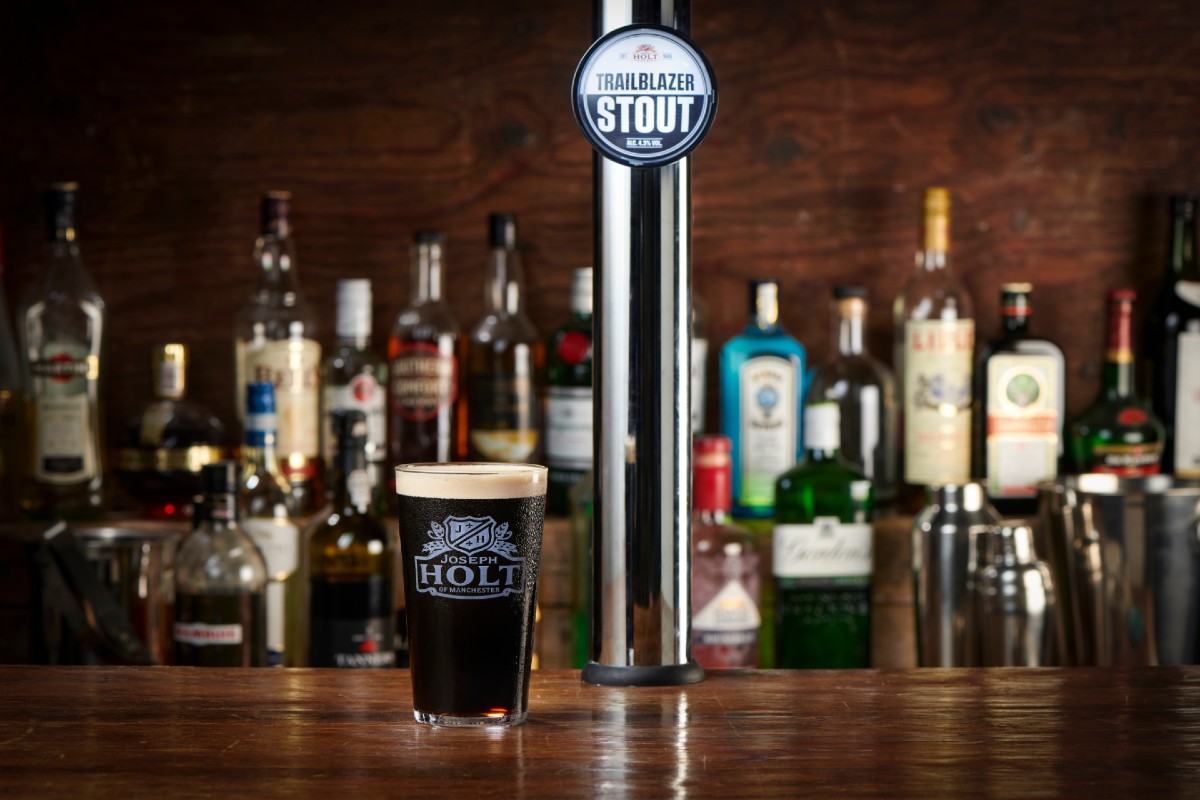
Pictured above: A pint of Trailblazer Stout. Also comes in 5l mini kegs.
Dark Ale
Dark ales can encompass an array of beer styles including porters and even barley wines, Black IPA.
Dark ale has been aged for longer. The longer a beer ages, the stronger it is and the more the flavours develop.
Dark ales were originally brewed in the 18th century and are again becoming popular.
A type of dark ale, Porter, dates from the early 18th century. It’s named after London porters who needed strength and nourishment from these rich, dark beers. These are usually medium-bodied and malty, offset by hops. There’s quite a crossover between dark ales and stouts.
We also have the brown ale beer style in this category. Examples include our Manchester Brown Ale.
Stout
Stout originated back at the beginning of the eighteenth century and stemmed out of porter. Contrary to popular belief, stouts are made from ale malt, alongside a quantity of roasted malt or barley, hops, water and yeast.
There are a few different types of stout, such as dry stout and milk stout. You can read more about stout in our guide here.
In 2020, we introduced our own Trailblazer Stout, which has quickly become a fan favourite.
Wrap up on the main beer styles
Well, there you have it. A brief, and by no means exhaustive, guide to the very many different beer types and styles. In fact, each category could probably warrant a guide all to itself! Even then, there would be beers that defy definition and beers that blur the lines.
What can we say? The best way to learn is to try. And what an enjoyable education that will be. Here at the Joseph Holt brewery, beer is what we do.
All of our different styles are brewed to perfection as befits our rich history and undeniable expertise. Yes, we do beer well, so well in fact that many of our different beers have won awards. Great beer and good times is a fitting motto for us!
